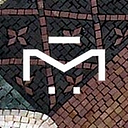Why 2024 Was a Breakthrough Year for Mosaic Art
In a world hooked on almost daily tech advancements and rapid social media-influenced trend-changes, mosaic art manages to be a beacon of unwavering beauty for millions of people around the world. This 2024 year, which is about to end, is a testament to the unmatchable value of mosaic art.
Not that we are bragging, but this year truly was an amazing and somewhat unexpected success for our sales department. Don’t get us wrong, we know the worth of our stunning artworks and we had high expectations, but this year exceeded them by far. We did some retrospective analysis of the market to figure out what actually led to that, and we’ve drawn some surprising, but quite logical conclusions.
First of all, this year was the year of biophilic design. If you’ve read interior design magazines or online publications this year you probably caught the phrase “the new trend of biophilic design”, or “the emerging biophilic trend”, but we beg to differ. Biophilic design can’t quite be characterized as a trend, simply because it encompasses too many things. It is more of a concept and as such it revolves around many aspects of design, with all of them having one main focus — nature.
Biophilic design seeks to connect people to nature in all of its forms. Buildings design following the rules and ideology of biophilic design incorporate things such as natural ventilation and lighting, natural landscape features, and a variety of other elements, in order to create a healthier and more productive environment for people. As such, biophilic design is the perfect architectural parallel to mosaic art.
On the same note, we are already deep in our sustainability, and environmental awareness era, so Mosaic was already a perfect fit in that regard. Mosaic art is handmade of natural materials, and unlike many other art forms, it hasn’t progressed into that sustainability. Quite the contrary actually. Mosaic art has a rich and colorful history dating back thousands of years and it is considered to be one of the original sustainable products.
For centuries mosaicists have used pebbles, stone, glass, and shells to create completely natural, low-maintenance, visually impactful mosaic imagery, and not much has changed over time. To this day, mosaic art remains the single most sustainable art form in human history, and as such, it perfectly fits this thrilling new narrative of environmentally friendly interiors and exteriors we are all trying to achieve and maintain.
This era of digital progress we are currently in brought many positives, but it also brought a variety of new stresses and anxiety-identified problems people have difficulty coping with. In that regard, mosaic art with its undeniable intricacy and natural look became a refuge for many. Its therapeutic effect has been known for centuries, and people recognize its value now more than ever.
On that note, everyone is busy and barely has time to take care of themselves, and no one wants an artwork that requires care and pampering. Mosaic art is perfect in that regard too, as it virtually needs no maintenance whatsoever. You don’t need to constantly clean it with special brushes and chemicals, save it from water or light, or tiptoe around it in fear of damaging it. All you have to do is install it and marvel over its beauty and durability, as simple as that.
We’ve drawn several more conclusions when analyzing our skyrocketing sales this year, but this article would be too long if we were to point them all out. All in all, mosaic art isn’t going anywhere and demand for it only keeps increasing over time for a good reason.
This article was originally published on Mosaics Lab’s website.
